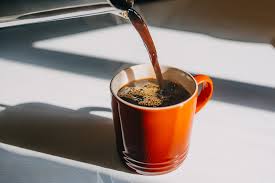
Breaking News
 The PREP Act and 7 Ways To Prevent Your Government From Systematically Poisoning You
The PREP Act and 7 Ways To Prevent Your Government From Systematically Poisoning You
 BREAKING EXCLUSIVE: Learn The Identities Of The Autopen Coup Leaders Who Stole...
BREAKING EXCLUSIVE: Learn The Identities Of The Autopen Coup Leaders Who Stole...
 AI's Prime Directive: Stunning Realization From ChatGPT Itself
AI's Prime Directive: Stunning Realization From ChatGPT Itself
 GLOBAL BOMBSHELL: Using Advanced AI Algorithms, Renowned Tech Inventor & COVID...
GLOBAL BOMBSHELL: Using Advanced AI Algorithms, Renowned Tech Inventor & COVID...
Top Tech News
 Cavorite X7 makes history with first fan-in-wing transition flight
Cavorite X7 makes history with first fan-in-wing transition flight
 Laser-powered fusion experiment more than doubles its power output
Laser-powered fusion experiment more than doubles its power output
 Watch: Jetson's One Aircraft Just Competed in the First eVTOL Race
Watch: Jetson's One Aircraft Just Competed in the First eVTOL Race
 Cab-less truck glider leaps autonomously between road and rail
Cab-less truck glider leaps autonomously between road and rail
 Can Tesla DOJO Chips Pass Nvidia GPUs?
Can Tesla DOJO Chips Pass Nvidia GPUs?
 Iron-fortified lumber could be a greener alternative to steel beams
Iron-fortified lumber could be a greener alternative to steel beams
 One man, 856 venom hits, and the path to a universal snakebite cure
One man, 856 venom hits, and the path to a universal snakebite cure
 Dr. McCullough reveals cancer-fighting drug Big Pharma hopes you never hear about…
Dr. McCullough reveals cancer-fighting drug Big Pharma hopes you never hear about…
 EXCLUSIVE: Raytheon Whistleblower Who Exposed The Neutrino Earthquake Weapon In Antarctica...
EXCLUSIVE: Raytheon Whistleblower Who Exposed The Neutrino Earthquake Weapon In Antarctica...
 Doctors Say Injecting Gold Into Eyeballs Could Restore Lost Vision
Doctors Say Injecting Gold Into Eyeballs Could Restore Lost Vision
4 coffee myths debunked by science

I love a cup (or four cups) of coffee in the morning. I enjoy the taste, I enjoy the ritual of grinding beans, and, yes, I enjoy the kick I get from the caffeine. It's just a nice way to start the day.
But, as with all nice things, coffee is sometimes misunderstood. This offends me—both as a coffee drinker and as a fan of science—so I thought I'd look into a few common coffee myths and dig up some actual science.
Dark roast isn't stronger
Many people think that dark roasts are stronger, and have more caffeine, than light roasts. And this makes an intuitive sort of sense—dark roast has a stronger taste, so why wouldn't it also have more caffeine. It's not true, though.
The difference between dark and light roast is, as the name implies, how much the coffee beans are roasted. A 2017 paper published in Nature by Megan Fuller and Niny Z. Rao of Thomas Jefferson University compared the caffeine concentration in coffee brewed using the same mass of medium and dark roasted coffee, all Arabica beans grown in the Kona Region of Hawaii. The results showed a "higher concentration in medium roast samples" than in dark.



